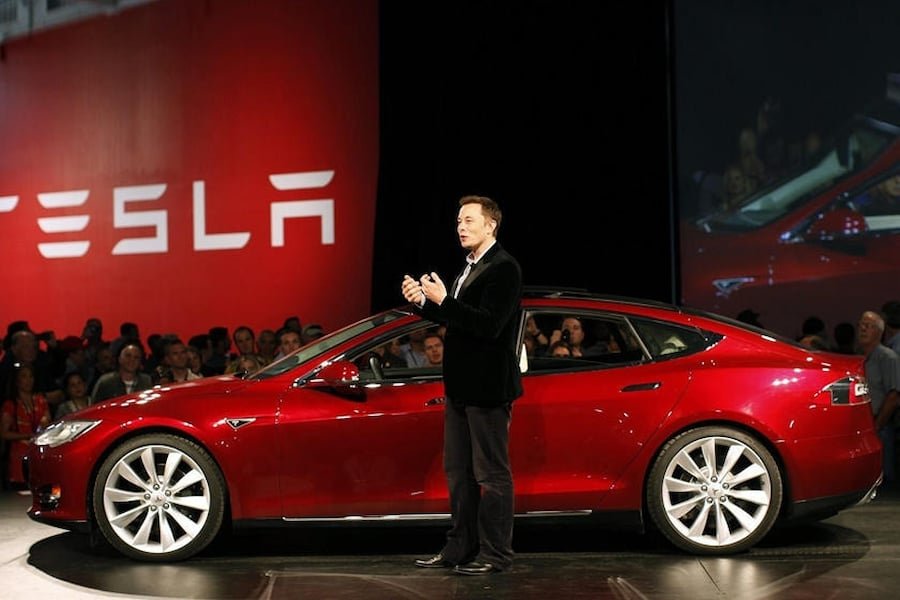The modern equivalents of Henry Ford, Karl Benz, and Ferdinand Porsche, this group of visionaries have changed the automotive landscape forever.
We’re right in the middle of a fascinating era for cars. It’s a time that will generate as many books and documentaries as Henry Ford bringing mass car production to the world and the muscle car era combined. We’re at the point where gas-only powered engines are peaking as electric power is starting to evolve and take over, whether as hybrid drivetrains or powered solely by a battery. We also have hydrogen-fueled cars on the road, and synthetic fuels are being engineered. To get to this beautiful melting pot of technology, the industry has relied upon automotive revolutionaries in the vein of people who have come before, such as Henry Ford, Colin Chapman, and Carroll Shelby. These are some of the critical automotive revolutionaries of the modern era.
 Tesla
Tesla
1. Elon Musk
We’ll start with Elon Musk, as his name will be forever associated with the rise of modern battery-powered vehicles. He certainly didn’t invent the modern electric car, but he had the vision to buy his way into Tesla. Martin Eberhard and Marc Tarpenning founded Tesla in 2003 with the aim of creating “a car manufacturer that is also a technology company,” and its core technologies are “the battery, the computer software, and the proprietary motor.” Musk bought into Tesla in 2004 with a $6.5-million investment and has been CEO since 2008, leading the company as it has grown into the largest automaker building solely electric-powered vehicles and stayed there. In a nutshell, and under Elon Musk, Tesla’s incredible focus on its main goals has forced the large automakers to step up and develop battery-powered vehicles as an alternative to petroleum power. Whether Musk and the Tesla will continue to remain relevant is debatable, but he’s already made his mark on automotive history.
 Tesla
Tesla
 Carbuzz
Carbuzz
 iGadgetPro/YouTube
iGadgetPro/YouTube
2. Christian von Koenigsegg
When he was a child, Christian von Koenigsegg saw a Norwegian movie about a bicycle builder who eventually built a car himself, and it stuck with him. He “built with his friends on a mountaintop this incredible racing machine and competed against the established brands and won,” von Koenigsegg told the BBC in an interview when discussing the film. “I remember walking out of the cinema and saying, ‘That’s what I want to do when I grow up.'”
That was the start of Koenigsegg’s journey towards founding a cutting-edge hypercar company at 22, funded by previous business ventures and a diet of “bread and water.” When the Koenigsegg company sold its first car in 2002, the CC8S, it entered the record books as one of the world’s fastest cars and for having the most powerful production engine. It helped define the idea of a hypercar.
Early on, Koenigsegg embraced 3D printing technology and laser scanners and is a leader in aerodynamics and engine technology. The Gemera uses a cam-less piston engine, but the company has also followed through on a “green technology” development program that saw flex-fuel powering the CCXR and the Jesko, which is at its most powerful on E85 biofuel.
 Koenigsegg
Koenigsegg
 Koenigsegg
Koenigsegg
 Koenigsegg
Koenigsegg
3. Mate Rimac
In high school, 19-year-old Croatian Mate Rimac turned a 1984 BMW 3 Series into an electric car in his garage and promptly broke records with it. At school, he was bullied for having a Bosnian accent and didn’t shine there. It was in his parent’s garage that he started inventing, then winning international awards for electronics and innovation before he was even 18. When he took his electric BMW to the track in 2006, he was mocked for bringing a “washing machine.”
In 2009, he created Rimac Automobili and started working on a concept electric supercar with Adriano Mudri, who was a designer at General Motors. Rimac struggled financially and with suppliers to build the Concept_One, and lost investors by refusing to relocate to the Middle East.
When the Concept_One arrived, it was the world’s fastest production electric vehicle. Now, Rimac produces battery packs, drivetrain systems, and vehicles for other automakers and has built a successor for the insane Concept_One, the Rimac Nevera. The Nevera isn’t just insanely fast but also features technology that’s the hallmark of Mate Rimac, like its facial recognition system.
He’s not done there, though. In 2021, Mate Rimac was announced as the new CEO of part of Bugatti Rimac, a joint venture between Rimac Group and Porsche AG.
4. Gordon Murray
Gordon Murray is an example of where the old and new schools interconnect. His career as a designer kicked off with Brabham as its Chief Designer in 1969. He forged his reputation for innovation by building Formula 1 cars, including world championship winners and the Brabham fan car. He moved to McLaren from 1987-1991 before heading up the McLaren Cars division and created the legendary McLaren F1 road car. In 2007, he founded Gordon Murray Design, where he designed a small city car that also netted him Autocar’s Idea of the Year Award for its manufacturing process. He also developed the Ox truck for the British charity, Global Vehicle Trust. The Ox truck is a small, inexpensive flat-pack truck designed for last-mile delivery services in developing countries.
He hasn’t forgotten about performance vehicles, with his latest project being the Gordon Murray Automotive T.33. It’s a Cosworth V12-powered two-seater supercar that comes standard with a six-speed manual transmission.
 Gordon Murray Design
Gordon Murray Design
 Gordon Murray Design
Gordon Murray Design
 Gordon Murray Design
Gordon Murray Design
5. Horacio Pagani
In 1981, the McLaren MP4/1 Formula One race car debuted with the first application of carbon fiber to a race car. Until its first race, it was derided by the rest of the industry as a “plastic car.” However, it quickly started dominating Formula 1, and a massive high-speed crash demonstrated its strength and value to safety. Every team moved to a carbon fiber chassis, but it was Horacio Pagani that wanted to put it in road cars. At the time, he worked for Lamborghini and wanted an autoclave – a machine that uses heat and pressure to cure carbon fiber. He met resistance from Lamborghini, though, which had the attitude that if Ferrari didn’t have one, Lamborghini didn’t need one. So, Pagani borrowed the money for the machinery in 1987 and left Lamborghini in 1991 to form a consulting company, Modena Design.
Modena Design still makes carbon fiber parts for race teams and automakers, including Ferrari, but he then founded Pagani Automobili S.p.A.. Pagani’s car company built the legendary carbon-fiber-based Zonda, then revealed the Pagani Huayra hypercar in 2011, which is still in limited production today.
 Pagani
Pagani
 Pagani
Pagani


6. John Chen
John Chen is a Hong Kong-born businessman, current CEO of BlackBerry (yes, the same BlackBerry famous for its phones right up until the iPhone appeared), and curveball of this list. Chen became CEO of Blackberry and oversaw its transition from a suddenly irrelevant cellphone company into something completely different. In fact, there’s a reasonable chance a car you’ve been in recently has BlackBerry software in it. Chen’s embracement of mobility makes him a visionary of epic proportions. The company’s QNX software is used by brands that include BMW, Ford, GM, Honda, Mercedes-Benz, Toyota, and Volkswagen for Advanced Driver Assistance Systems (ADAS), digital cockpits, and secure data gateways. Most EV makers use BlackBerry’s QNX software, which will likely be key if fully-autonomous cars are ever ready to go mainstream.
 Disney
Disney
 BlackBerry
BlackBerry





